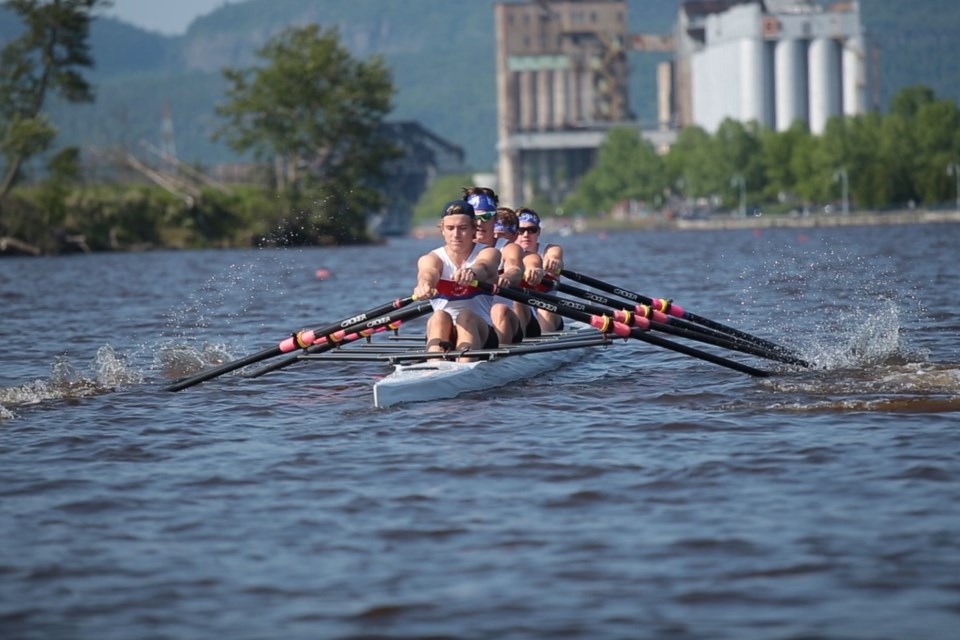THUNDER BAY -- Alison Parsons came late to rowing. It was only after one of her sons, Liam Parsons, won bronze in the men’s lightweight fours at the 2008 Summer Olympics in Beijing, that she tried it out for herself.
“I knew nothing about rowing. But at the reception for Liam after the Olympics, I said, ‘if I was younger, I think this is a sport I’d really like,’” she recalls.
An acquaintance signed her up for beginner rowing, saying Parsons was far from too old to start rowing. “I was 59 when I started. And I just loved it,” she says.
Twelve years later, Parsons is now a learn-to-row coach (for beginners,) a volunteer and former executive member of the Thunder Bay Rowing Club.
The club anticipates about 30 to 40 members this year, and is preparing for their annual regatta on June 25. The last two regattas were cancelled due to the pandemic, but previously, the regatta attracted rowing teams from Kenora, Duluth, Minneapolis, St. Paul, and occasionally Winnipeg and Regina.
National Come Try Rowing Day was on May 28 this year, and the Thunder Bay Rowing Club hosted an event for beginners to the sport. This year, Parsons says, they had people ranging from 13 years old to people in their 50s sign up. “You get all ages,” she explains. “Rowing is one of those sports that you can do at any age. It’s really good on your joints. It’s low-impact on the joints and a really good workout.”
“We get people with knee problems, or hip problems. They don’t look very graceful getting in or out of the boat, but it doesn’t matter. As long as you can enjoy it once you’re on the water,” she says. Beginners usually go in a quadruple boat, with the person in the bow instructing.
Rowing is very different from other paddling sports like canoeing or kayaking, Parsons explains. “In other [paddling sports] you’re using your arms to propel the boat. But in rowing, it’s mostly your legs. You hold onto the oars with your hands but you’re driving with your legs. Your arms aren’t the driving force,” she explains.
It’s an endurance sport, like cross country skiing or cycling, she adds. “But it’s also quite technical, and it’s a team sport. You have to all push at the same time, you have to put your oars in at the same time. But when you get it going all at the same time, it’s the most wonderful feeling. The boat just glides through the water. The glide of the boat, the serenity and effort, it’s beautiful.”
If you’ve never tried rowing but are thinking about it, “just come give it a try,” Parsons says encouragingly. The club hosts rowing sessions for a variety of levels, from beginners to competitive rowers. Rowing is a late-entry sport; kids typically start in the low teens. “We really like to have young rowers; that’s the age when you really learn.”
The club practices on the Kaministiquia River, usually from the James St. Bridge to the south of the Kam. “Occasionally we go further upstream; a nice lazy row, a change of scenery,” Parsons says. “And occasionally we get a really calm day in the summer, especially early in the morning. We row out to Lake Superior, and back up the McKellar or Mission River. The scenery is beautiful. Wildlife, birds, otters, deer, beavers, pelicans, it’s just lovely.”
Rowing has become a lifetime hobby for Parsons now. The most rewarding aspect of rowing is just being outside, on the water, enjoying the peace, the coach says. “Especially on a sunny day, when the sun is glinting diamonds off the water. There’s wildlife around, and the sound of the water, the feeling of being in unison with the other rowers, it’s just magical. It’s beautiful,” she says.



